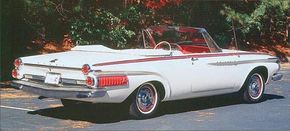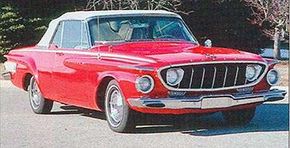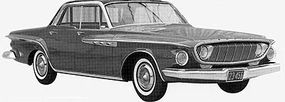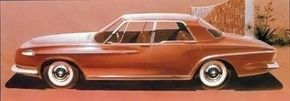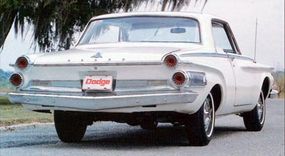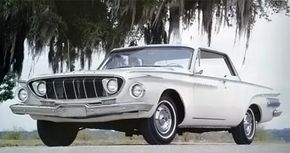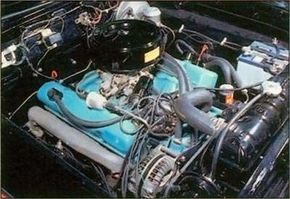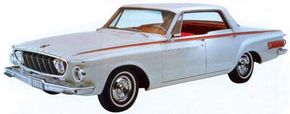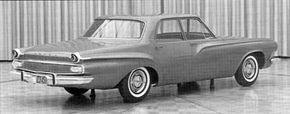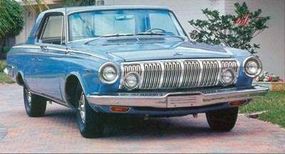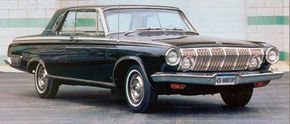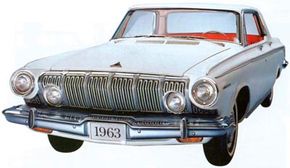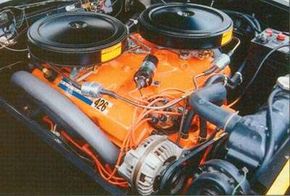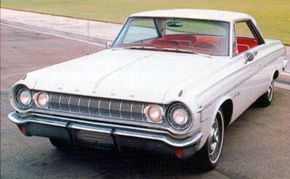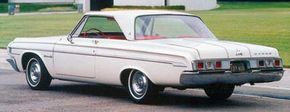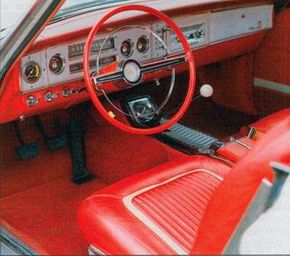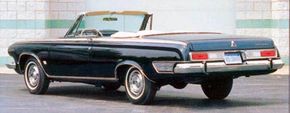The start of the Sixties saw several new types of cars sprouting up in America as Detroit began fine-tuning its marketing. The 1962-1964 Dodge Polara 500 was one example. Aside from compacts, there were also "personal-luxury" cars and high-performance specials built to a formula that included V-8 engines, unique trim, and bucket seats. When Dodge mixed these ingredients, it cooked up the 1962-1964 Dodge Polara 500.
Advertisement
Imagine you're on some Survivor-type TV program, alone out on the vast Utah salt flats. It's dark, desolate, and there's a chill in the air. Out in the distance, three cars are quickly moving toward you, all with their low- and high-beam lights blazing. From among those 12 circles of light, your test is to distinguish the 1962 Dodge Polara 500 from the 1963 and 1964. How do you do it?
If you know your Polara 500s, it's easy. The car with the inboard lamps higher than the outboards is the 1962; the car with the inboard lamps lower than the out-boards is the 1963; and the car with all lamps at the same height is the 1964. (Hey, you never know when this information will come in handy!)
The 1962 Polara 500 was Dodge's first attempt at a personal-luxury car with performance overtones. As such, it was the product of many powerful forces at work in the late Fifties and early Sixties. Some -- the introduction of smaller cars and the sudden demand for bucket seating -- involved the entire American automobile industry. Others were peculiar to the Chrysler Corporation. A quick look is in order.
Despite all the fuzzy-dice fondness for the decade, the last few years of the Fifties were turbulent ones for the American automobile companies. After a record-breaking 8-million-car year in 1955 and a second-best 6-million-car year in 1957, the industry suffered with the rest of the American economy in a short, but deep, recession in 1958. Simultaneously, an unexpected slump in the medium-price car market eliminated Nash, Hudson, Packard, and DeSoto, and gutted Mercury. It turned the Edsel, Ford's new medium-price entry planned in the halcyon days of 1955, into a marketing and financial fiasco.
Moreover, as sales of these high-profit cars were declining, the rising popularity of the Volkswagen Beetle and George Romney's Rambler drove the Big Three to introduce new smaller "compact" cars in the fall of 1959, cars that yielded diminished profit margins. The car market was undergoing what we'd today call a "sea change." All over Detroit, product planners were asking, "What kind of car should we build?" Big or small? V-8 or six-cylinder? Front-engine or rear? More chrome or less? It was a time of great uncertainty and, therefore, great risk.
For more information on cars, see:
- Classic Cars
- Muscle Cars
- Sports Cars
- New Car Search
- Used Car Search
Advertisement
